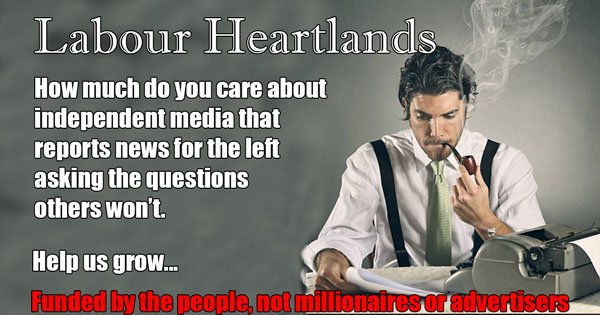The Extinction Rebellion protesters are doing a great job with disruption. Now the establishment needs to offer solutions.
I take my hat off to the protesters, they are highlighting this most important issue we face today ‘CLIMATE CHANGE’, the environment, the planet and the place we all live. But to sell the idea of change we need to feed the capitalist machine with the alternatives. The only alternatives they will listen to are the ones that will still feed their never-ending unquenchable greed.
Meet the world’s top destroyer of the environment. It is not the car, or the plane, or even Donald Trump: it is the cow.

Cost of a Burger
A cow on overage release between 70 and 120 kg of Methane per year. Methane is a greenhouse gas like carbon dioxide (CO2). But the negative effect on the climate of Methane is 23 times higher than the effect of CO2. Therefore the release of about 100 kg Methane per year for each cow is equivalent to about 2’300 kg CO2 per year.
Let’s compare this value of 2’300 kg CO2: The same amount of carbon dioxide (CO2) is generated by burning 1’000 litres of petrol. With a car using 8 litres of petrol per 100 km, you could drive 12’500 km per year (7’800 miles per year).
Worldwide, there are about 1.5 billion cows and bulls. All ruminants (animals which regurgitate food and re-chews it) on the world emit about two billion metric tons of CO2-equivalents per year. In addition, clearing of tropical forests and rain forests to get more grazing land and farmland is responsible for an extra 2.8 billion metric tons of CO2 emissions per year!
According to the Food and Agriculture Organization of the United Nations (FAO), agriculture is responsible for 18% of the total release of greenhouse gases world-wide (this is more than the whole transportation sector). Cattle-breeding is taking a major factor for these greenhouse gas emissions according to FAO. Says Henning Steinfeld, Chief of FAO’s Livestock Information and Policy Branch and senior author of the report: “Livestock are one of the most significant contributors to today’s most serious environmental problems. Urgent action is required to remedy the situation.”
Livestock now use 30 per cent of the earth’s entire land surface, mostly permanent pasture but also including 33 per cent of the global arable land used to producing feed for livestock, the report notes. As forests are cleared to create new pastures, it is a major driver of deforestation, especially in Latin America where, for example, some 70 per cent of former forests in the Amazon have been turned over to grazing.
Burning fuel to produce fertiliser to grow feed, to produce meat and to transport it – and clearing vegetation for grazing – produces 9 per cent of all emissions of carbon dioxide, the most common greenhouse gas. And their wind and manure emit more than one-third of emissions of another, methane, which warms the world 20 times faster than carbon dioxide.
Livestock also produces more than 100 other polluting gases, including more than two-thirds of the world’s emissions of ammonia, one of the main causes of acid rain.
Just a side order
Over recent years McDonald’s to announced initiatives on how they intend to take a bite out of carbon footprint with new Science-Based Targets
McDonald’s has become the first global restaurant company to set greenhouse gas targets in line with global climate science, it claimed today as it launched a raft of new green commitments.
The fast-food giant has pledged to reduce emissions from its restaurants and offices around the world by 36 per cent by 2030, using 2015 as a baseline year – a goal approved by the Science-Based Targets (SBT) initiative.
McDonald’s also committed to a 31 per cent cut in emissions intensity across its entire global supply chain over the same period.
Altogether, it said its SBT pledges will save 150 million metric tonnes of CO2 by 2030.
Under the SBT initiative, companies have to publicly commit to detailed emissions reduction goals, which are then independently verified as being in line with the trajectory suggested by scientists to give the world a reasonable chance of keeping temperature increases below 2C above pre-industrial levels.
McDonald’s joins the likes of Gap, Nike, Adobe, Mars and Nokia in making an SBT-approved pledge. But the fast food giant, which has almost 37,000 restaurants worldwide, could prove a controversial addition, given its influence over the global beef market, a major source of global greenhouse gas emissions.
In working towards the new goals, McDonald’s said it would prioritise action on beef production and restaurant energy usage, as well as sourcing packaging and waste.
It comes as the company marks 10 years of its UK delivery fleet using 100 per cent biodiesel recycled from cooking oil, an initiative which it claims has saved nearly 7,000 tonnes of CO2 every year compared to traditional fleets.
All franchised- and company-owned McDonald’s branches in the UK are already run on 100 per cent renewable electricity from a combination of wind and solar power, and 60 per cent of its modular new build restaurants have their own solar panels, it added.
This is not a dig at McDonald’s after all they are making the effort unlike some other fast food chains. However McDonald’s are by far the more recognisable here in the UK.
Usual order, please!
The only real impact would be for McDonald’s to make a dramatic step-change to its menu and remove Beef from the Burger.
A few years ago that would have been unthinkable, a fast food restaurant that made its name on Beef Burgers no longer selling Beef. However today there is a positive trend away from the consumption of meat, veggies and vegans are no longer looked upon as the pale lily liveried but active and healthy. The connections to obesity and fast foods cannot be denied.
The documentary Super Size Me is a 2004 American documentary film directed by and starring Morgan Spurlock, an American independent filmmaker. Spurlock’s film follows a 30-day period from February 1 to March 2, 2003, during which he ate only McDonald’s food. The film documents this lifestyle’s drastic effect on Spurlock’s physical and psychological well-being, and explores the fast food industry’s corporate influence, including how it encourages poor nutrition for its own profit.
Of course, the impact on the cattle market industry would be devastating to ranchers and farmers both of whom work damned hard to make a living. That industries contribution to GDP and the state is not meagre. Any radical change would result in a major loss to an important worldwide industry and market. We don’t need hard questions, we need hard answers to bring about solutions.
Packed and ready to go!
Another main contributor to the destruction of our planet is the scientific wonder of the 20th-century Plastic. The same Plastics that are destroying our seas along with the amazing marine live within them.
For the last half-century, plastic has become an integral part of our daily life. From furniture to grocery bags, from vehicle parts to toys, plastic is an unavoidable element of our lives in a variety of forms. However, from being regarded as a very vital presence in the contemporary world, plastic has now come to be looked upon as a material of immense potential destruction and harm.
As is commonly known, plastic isn’t biodegradable, which accentuates the threat of lingering waste plastic for years and for generations to come. According to estimates, people around the world throw away almost four million tons of trash every day, of which 12.8% is plastic, polluting land, air and water. While plastic thrown into landfills contaminates the soil and groundwater with harmful chemicals and microorganisms, the effects of marine pollution caused by plastic are immeasurable.
People are becoming more aware of our own footprint on the planet with fantastic productions like Blue Planet II that highlights Plastic Pollution Awareness. Sir David Attenborough’s haunting message on plastic pollution in the oceans.
Sir David Attenborough was asked: How serious do you think this issue really is?
IT COULD HARDLY BE MORE SERIOUS.
“I suppose, for me, the thing that is so galling about plastic pollution in particular is that it is so utterly unnecessary. The plastic in our oceans ought never to have got there in the first place – much of it perhaps ought not to have even been manufactured at all. And yet it is there, in unbelievable quantities, causing untold harm to marine wildlife.
“And, of course, once it’s in the sea, it doesn’t really break down properly – it remains there for decades or even centuries. So unless we get to grips with this quickly, we will soon find our oceans completely dominated by plastic. It’s a prospect that hardly bears thinking about.”
Do you think we are going in the right direction?
“There is no doubt that human beings are having a profound impact on the marine environment. From pollution to climate change to overfishing, we are gradually eroding away at the health of our oceans.
“How we tackle these threats is a difficult but important question. I’m afraid I don’t know the answer, but I do take heart in the fact that there are a lot of people out there working on ways that we can deal with plastic waste. It won’t be easy by any means, but as long as we keep building on the momentum we have gained then I am hopeful we can make progress.”
What would you encourage readers to do in their own lives, to tackle the problem of plastic pollution?
“The obvious answer is that we all need to think – and I mean really think – about how we use plastic. I regularly receive letters from people about their love of wildlife and conservation; and yet even then, even though the writers are ardent nature enthusiasts, they will often put their letter in a plastic folder – to make it look more important I imagine.
“So, as strange as it may sound, I would encourage people to treat plastic with respect, because if it escapes into the environment it will remain there for a very long time. If you don’t need it, don’t use it. And if you do use it, be mindful of where you put it.”
Fracking for Plastic
The Oil & Gas Industry Want to Create New Demand For Plastics
As the fracking boom matures, the oil and gas industry is seeking new ways to monetise U.S. shale production. The oil and gas industry no longer pretends that drilling and fracking are about energy independence. New natural gas (liquified natural gas or LNG, not to be confused with NGL) export facilities have come online and more are planned. And now new ethane crackers and petrochemical manufacturing are planned to take advantage of ethane from U.S. fracking. The Centre for International Environmental Law have been reports on plans to build or expand 264 petrochemical plants and increase U.S. plastics production by 1/3.
The irony is that the U.S. market for plastics is not projected to increase, so this buildout of new infrastructure will be for plastic for export markets.
“It’s s time we stop, hey, what’s that sound Everybody look what’s going down”

HEMP: THE WONDER PLANT
It’s useful for everything from cooking oil to cloth. Paper made from it was used to print the Gutenberg Bible, as well as drafts of the American Declaration of Independence. It’s rich in nutrients essential to good health in human and animals alike. It’s touted as having thousands of uses and can be grown without using pesticides. So why aren’t more farmers growing hemp?
This ain’t no Cowboy vs Farmer war. This is saving the planet
The economist Joseph Schumpeter talked about the process known as “creative destruction” – the way in which inefficient producers are put out of business by disruptive new technologies and that, as a result, transformation happens.
I would not be so naive or arrogant to suggest that cattle farmers just switch to growing Hemp but there is opportunity and “money in them there plants!” If we want a sustainable world we are all going to have to make the hard choices and change.
Back on the Farm
Of course, there are viable alternatives to plastic packaging. One I advocate when given the opportunity is Hemp. Yes, the wonder plant hemp! Hemp in packaging. Bioplastics, meaning any plastic that is plant-based, biodegradable, or both, replaces fossil-based carbon in plastic with carbon from renewable sources such as corn or hemp. Tubbs, now manufacturing about a million pounds of hemp-based bioplastic a week, is confident that hemp bioplastic will overtake petroleum-based raw polymer in coming decades.
Thanks to a confluence of consumer demand for more sustainable goods, corporate initiatives and falling manufacturing costs, production of bioplastics is poised to take off. By 2020, bioplastics are predicted to control 5 per cent of the plastics market, rising to 40 per cent by 2030, according to Grand View Research.
If you want it to succeed you have to sell it to the capitalist, they need to see the money.
GLOBAL BIOPLASTICS MARKET PREDICTED TO GROW 350%
There is a tremendous opportunity in a growing segment of the largest material market in the world, the plastics market! However, the industry is drastically changing in the developed world as government policies and consumers are pressuring manufacturers to shift towards eco-friendly packaging and a focus on switching from fossil fuels to renewable resources.
Companies are shifting to alternative forms of packaging using renewable biomass materials, making “bioplastics”. Companies like Coca-Cola® have introduced their ‘PlantBottle’ made up of 30% plant-based materials. With manufacturers shifting from traditional plastics to bioplastics, analysts are expecting the bioplastic market to grow at CAGRs of 17.5% or more between 2016-2020.
But what does this equate to? An industry that will expand globally to $20 billion by 2019 & $324 billion by 2030. But what does this really means on the ground is someone needs to grow the hemp to make the products.
Application Insights
The textile industry is one of the largest consumers in the industrial hemp market as it is used in manufacturing apparel, fabrics, denim, fine textiles, and others. It is also used in manufacturing several industrial textile products such as twine, rope, nets, canvas bags, tarps, carpets, and geotextiles. This application segment is expected to grow on account of high strength offered by fibres.
The personal care industry is expected to register a revenue-based CAGR of 15.9% from 2018 to 2025 on account of high fatty acid content of the product. Body care products containing seed oil reduce skin discomfort by soothing and restoring dry or damaged skin and also help slow down the ageing process, which is likely to drive demand.
ENVIRONMENTAL PROTECTION
Hemp grows to between 1.8 and 4.5 metres tall (dependent on variety/cultivar) in four to five months in the UK. Weeds are almost eradicated due to the dense canopy of shade leaves, eradicating the need for pesticides and herbicides. It can also be grown with no agricultural chemicals, reducing soil toxicity.
RESTORES SOIL HEALTH
Hemp is so versatile that it thrives in adverse soil conditions. It sends out strong root networks, locking Nitrogen in its leaves. The deep roots provide a binding function, helping to prevent soil erosion, and hemp was also used to clean up the nuclear spill in Chernobyl, Russia.
CARBON SEQUESTRATION
One hectare of industrial hemp can absorb approximately 15 tonnes of CO2 (Lhoist 2016) making it one of the fastest CO2-to-biomass conversion tools. Industrial hemp is the perfect carbon sink because it absorbs more CO2 per hectare, annually than any other commercial crop or commercial forestry.
HEMP IS NOT MARIJUANA
While they come from the same plant species, Cannabis Sativa, hemp products have only trace amounts of THC, the psychoactive chemical in marijuana. Industrial Hemp cannot get you high.
HEMP HAS A LONG HISTORY IN THE U.K.
In 1533, King Henry VIII made hemp cultivation compulsory by law. For every 60 acres, farmers had to grow about 1/4 acre of flax or hemp, or else they would face a fine for breaking the law. They could even pay their taxes with Hemp.
PRESENT HEMP SITUATION IN THE U.K.
In the UK, it is estimated that the maximum area under cultivation is no more than 810 hectares. By comparison, in 2016, Europe cultivated over 33,000 hectares of industrial hemp an increase of more than 30% on the previous year.
HEMP IS MAKING A COME BACK
Although the size of the UK hemp cultivation sector is currently extremely small, we are already bringing innovation to the industry through pioneering research at York University and other leading institutions.
HEMP FOR HUMANITY
Globally, hemp has been recognised for thousands of years as an extremely versatile, robust and environmentally friendly plant delivering considerable societal and economic benefits to people and communities.
MAKE HEMP FARMING ACCESSIBLE
For hemp to be a viable cash crop for our farmers and processors, we need to be allowed to utilise the entire plant. The BHA’s focus is to contribute to inform, educate and lobby for progressive and environmentally responsible legislative change.
You get the picture!
The Extinction Rebellion protesters are quite right to bring such attention to the plight of the world Boycott the Burger may have more effect see how fast you get service. Make things happen offer the solutions and demand the change.
Support Independent Journalism Today
Our unwavering dedication is to provide you with unbiased news, diverse perspectives, and insightful opinions. We're on a mission to ensure that those in positions of power are held accountable for their actions, but we can't do it alone. Labour Heartlands is primarily funded by me, Paul Knaggs, and by the generous contributions of readers like you. Your donations keep us going and help us uphold the principles of independent journalism. Join us in our quest for truth, transparency, and accountability – donate today and be a part of our mission!
Like everyone else, we're facing challenges, and we need your help to stay online and continue providing crucial journalism. Every contribution, no matter how small, goes a long way in helping us thrive. By becoming one of our donors, you become a vital part of our mission to uncover the truth and uphold the values of democracy.
While we maintain our independence from political affiliations, we stand united against corruption, injustice, and the erosion of free speech, truth, and democracy. We believe in the power of accurate information in a democracy, and we consider facts non-negotiable.
Your support, no matter the amount, can make a significant impact. Together, we can make a difference and continue our journey toward a more informed and just society.
Thank you for supporting Labour Heartlands












